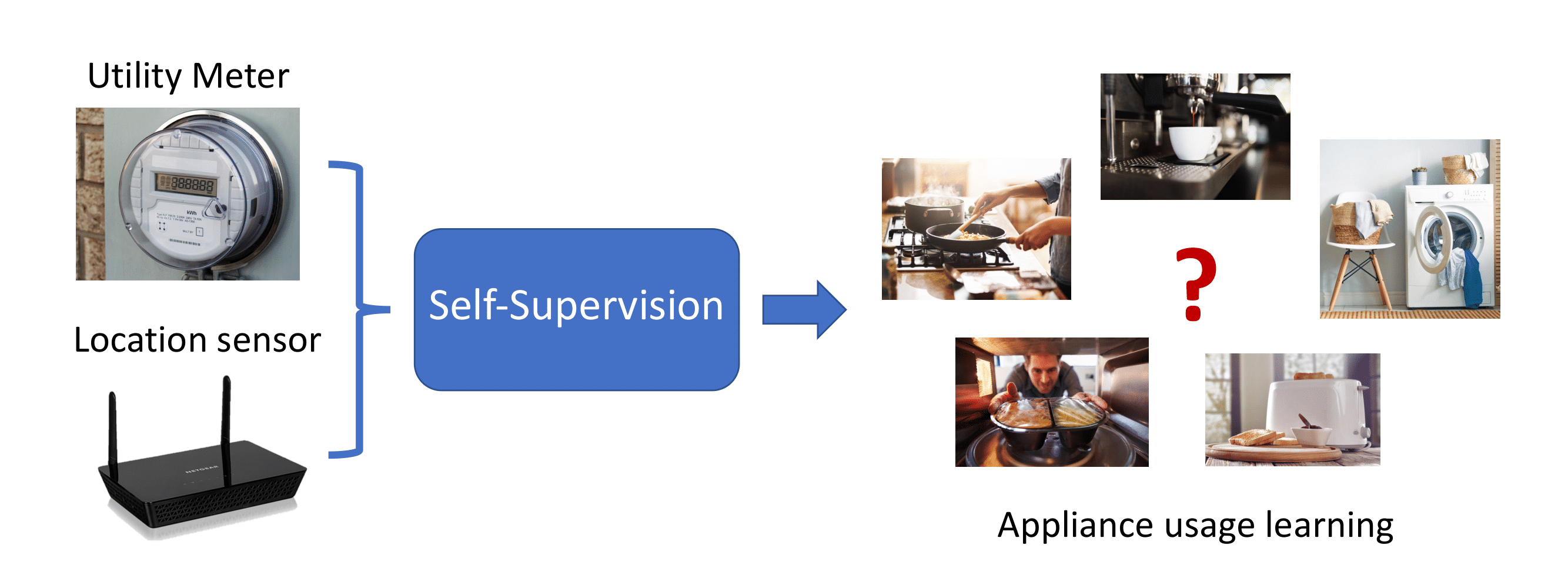Learning appliance usage in homes
Problem: detect when different appliances are turned on.
Why learning appliance usage?
- Useful for energy saving and improving energy efficiency
(consumer, industry, and policy benefits are discussed in Armel et al 2013). - Health sensing by understanding user habits and activities at home (e.g., for seniors living alone)
- Provide behavioral analytics
Past work has looked at the problem using energy data from the utility meter. These meters sample the total energy consumed by a home over time. The challenge is that the input data is a mix of multiple patterns.
 Our solution combines utility meter's total energy data with residents' location data from a passive radio sensor.
Our solution combines utility meter's total energy data with residents' location data from a passive radio sensor.